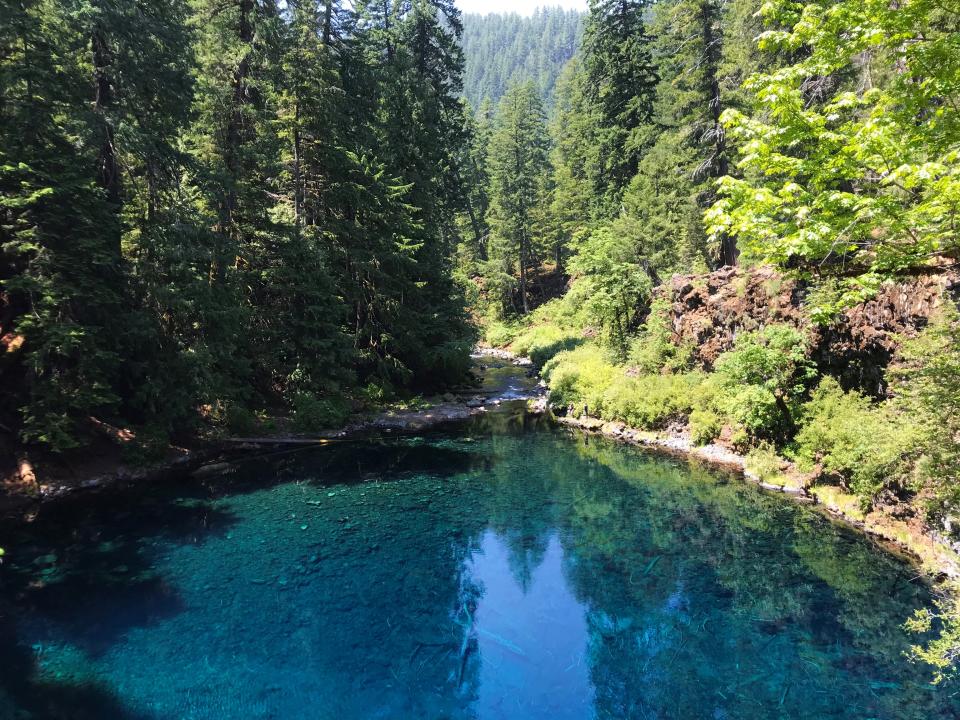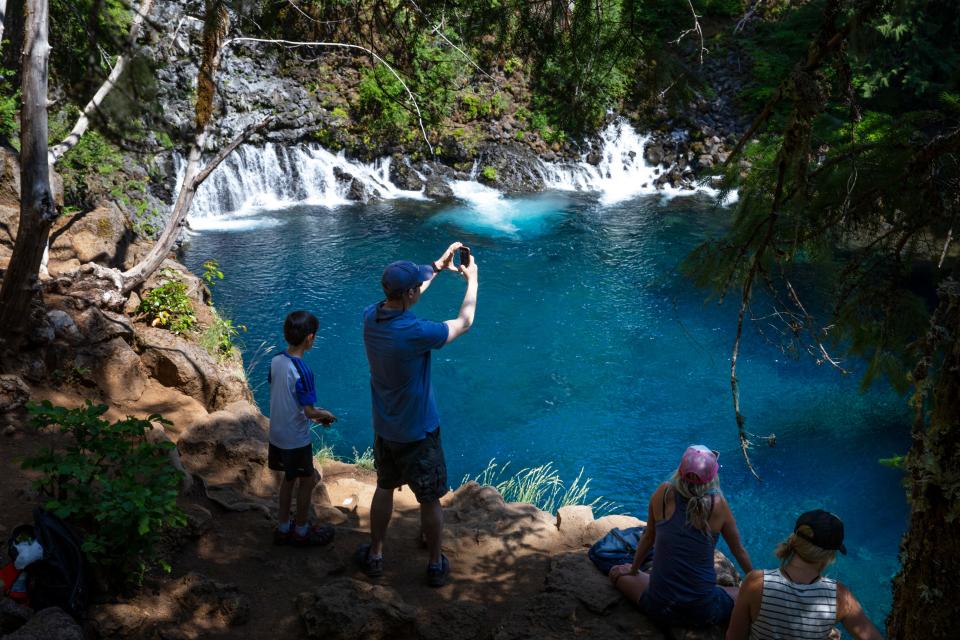Blue Pool emergencies tax local medical response teams at Tamolitch Falls in Oregon
Emergency response teams on Monday assisted three separate individuals at the remote Tamolitch Falls, popularly known as Blue Pool, an occurrence responders say is part of an alarming trend as temperatures and crowds rise.
On Saturday, medical teams treated two other individuals at Tamolitch Falls in the Willamette National Forest along the McKenzie River Trail. And on July 2, one person was airlifted from the site by a Coast Guard helicopter.
People needing rescue from the popular site is not a new phenomenon — it's been the site of multiple deaths and numerous rescues over the years. But with staffing short and crowds growing, getting people to safety has been an increased burden that's led emergency crews to ask visitors to take more care when they recreate.

In the recent rescues, most of the patients had to be walked out on a stokes basket, which requires a significant amount of time and staffing, according to officials with the Sweet Home Fire Department, one of the area's primary emergency responders.
"There isn't a way to get motorized vehicles, or even a side-by-side into that area, so what we end up doing is putting them in what's called a stokes basket that has a wheel like a bike tire under it and then it takes several people to walk alongside it and get them out," said Battalion Chief Shannon Pettner.
The emergencies range from heat-related illnesses and dehydration to critical injuries from falling or jumping into the frigid water. Many of the emergencies can be avoided by staying hydrated, being aware of the risks, using caution and hiking within your fitness capabilities, officials said.
"Summertime is always a busy time, especially for recreation, so Tamolitch Falls and Sahalie Falls get pretty busy with a lot of hikers," said Pettner. "We see anything from turned ankles to people with severe head injuries, and that's part of Sweet Home's ambulance area."

Linn County Search and Rescue, Eugene Mountain Rescue and others provide assistance on many of the area's wilderness calls, but the agencies struggle to keep up with the high demand for assistance.
"We do get a lot of help from our neighbors, but they are also seeing increased call volumes and staffing challenges, so it's becoming very difficult," Pettner said.
Responding to emergencies in the remote area is challenging for public safety agencies due to poor radio communications, long travel times and high-effort rescue operations. When someone is injured far up the 4-mile out-and-back trail, crews must hike in and out.
"It just takes a lot of time for us to get to them and to pack them out," Pettner said.
The average emergency response time for Tamolitch Falls takes about seven hours from departure to return to the station. For Linn County Search and Rescue, response times can be even longer as they respond from Albany, 30 miles farther west on Highway 20.
Most calls to Tamolitch Falls require about 20 responders from various agencies, which stresses the area's ability to meet other emergency needs.
"We just can't really afford to be without those resources for other calls in our area," Pettner said. "The increase in call volume up there is really straining our system."
Cliff jumping into Blue Pool has long been deadly
One of the main problems at the site is cliff-jumping.
Search online, and it's easy to find video of people leaping off the cliffs and dropping 70 feet into Blue Pool. While those featured in the video escape unscathed, the reality is that an errant jump from that height can go bad in a moment.
Multiple people have died over the years after leaping from the high cliffs.
“(The jump) is like hitting a concrete wall at 40 miles per hour,” Todd Shechter, volunteer mission coordinator of the Corvallis Mountain Rescue Unit, told the Statesman Journal in 2016. “But it’s not just that. Because of the water’s clarity, it’s hard to judge where the rocks are and where to jump. Plus, the water itself is extremely cold, around 37 to 40 degrees, which can cause a real shock to the system.”
Charles Gearing is a breaking news reporter for the Eugene Register-Guard. He may be reached at cgearing@gannett.com.
This article originally appeared on Register-Guard: Blue Pool emergencies tax response teams at Tamolitch Falls

